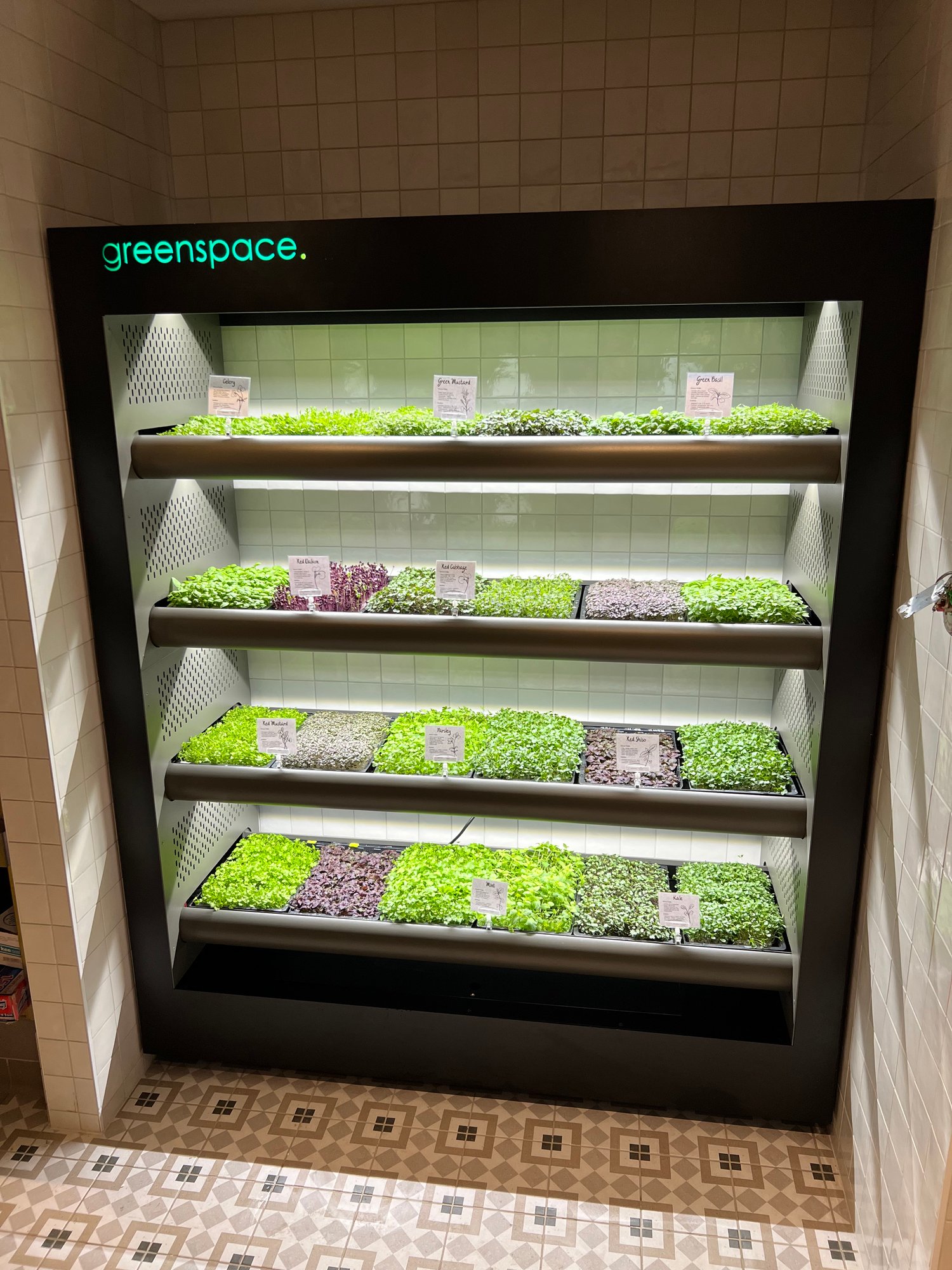Hydroponics
-1.jpg?height=2000&name=TKO05660(2)-1.jpg)
The word hydroponics comes from two Greek words, "hydro" meaning water and "ponics" meaning labor. The concept of soilless gardening or hydroponics has been around for thousands of years. The hanging Gardens of Babylon and The Floating Gardens of China are two of the earliest examples of hydroponics. Scientist started experimenting with soil less gardening around 1950. Since then other countries, such as Holland, Germany, and Australia have used hydroponics for crop production with amazing results.
Crops grow on a platform of water, requiring no soil, in modular units with sun-replicating LED lights. Dozens of sensors monitor irrigation, nutrient levels, humidity and temperature, all of which are controlled remotely via the cloud that uses the data to perfect growing conditions.
With a large portion of the worlds farmland shrinking, and food shortages affecting countries all over the world, newer farming methods like aeroponics and hydroponics allow crops to be grown where traditional farming cannot. As these alternative farming systems increase in popularity, more misconceptions arise about the design, environmental impact, and the overall health of the plants grown using aeroponics and hydroponics. In hydroponics, plants may be suspended in water full-time or fed by an intermittent flow of water. Hydroponic farming utilizes nutrient-rich water, but the process of delivering these nutrients is different per crop. Instead of spraying the solution on to the roots, the plants are either grown in containers of nutrient solution, or the solution is circulated past the roots.

THE BENEFITS OF HYDROPONICS
Hydroponicsis proved to have several advantages over soil gardening. The growth rate on a hydroponic plant is 30-50 percent faster than a soil plant, grown under the same conditions. The yield of the plant is also greater. Scientist believe that there are several reasons for the drastic differences between hydroponic and soil plants. The extra oxygen in the hydroponic growing mediums helps to stimulate root growth. Plants with ample oxygen in the root system also absorb nutrients faster. The nutrients in a hydroponic system are mixed with the water and sent directly to the root system. The plant does not have to search in the soil for the nutrients that it requires. Those nutrients are being delivered to the plant several times per day. The hydroponic plant requires very little energy to find and break down food. The plant then uses this saved energy to grow faster and to produce more fruit. Hydroponic plants also have fewer problems with bug infestations, funguses and disease. In general, plants grown hydroponically are healthier and happier plants.
Maintaining a solar-powered grow room is likely at the top of every growers wish list on the commercial level. There is extensive research in this field with rapid improvements in both solar technologies and the equipment being powered. Just like standard electricity, theres no limit to what can be powered through solar energy. We intend to limit the investment required to build and operate a grow room that is powered completely by renewable energy.

-1.png?width=309&height=52&name=GSPlogoTBG-01%20(7)-1.png)